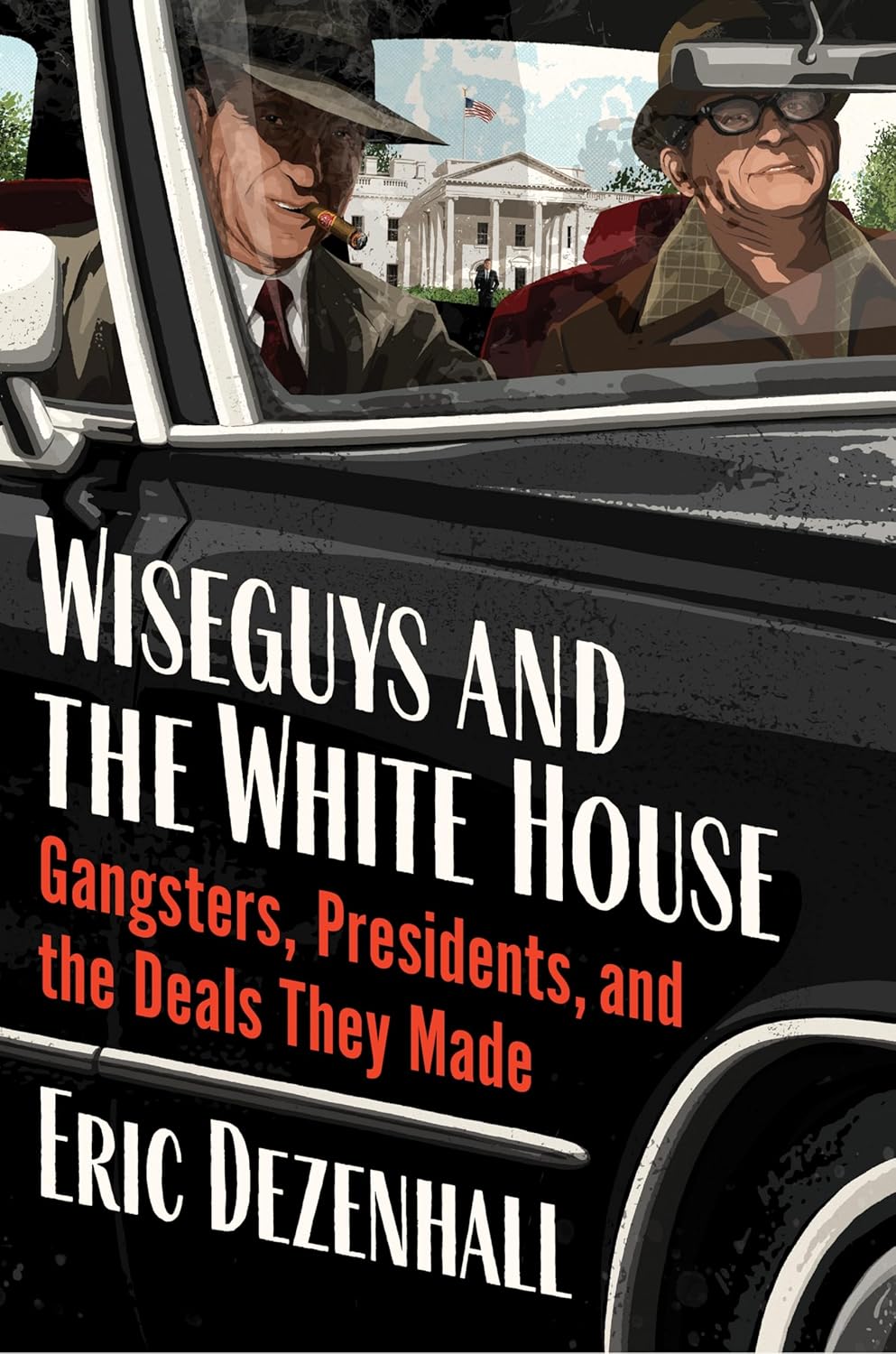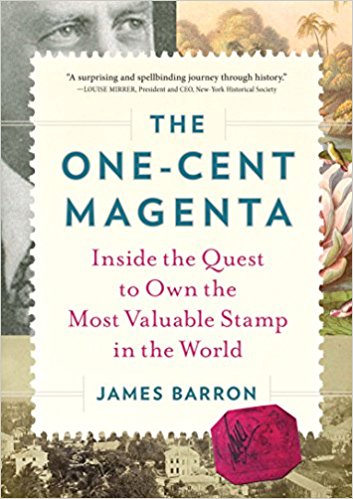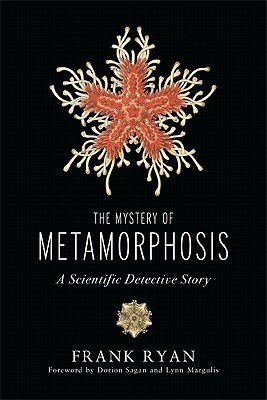Wiseguys and the White House: Gangsters, Presidents, and the Deals They Made
- By Eric Dezenhall
- Harper
- 368 pp.
- Reviewed by Diane Kiesel
- January 20, 2025
A rollicking if under-sourced look at mobsters in the Oval.

In the Rolling Stones’ infamous anthem to the 1960s, “Sympathy for the Devil,” the evil creature of the title materializes wherever hell breaks loose on Earth — at the crucifixion of Jesus, the Blitzkrieg, the overthrow of Tsar Nicholas, etc. Similarly, in Eric Dezenhall’s Wiseguys and the White House, the Mafia intersects with practically every president from Franklin D. Roosevelt through Joe Biden.
Maybe.
Without source notes to support his premise, the author misses an opportunity to shed new light on old rumors. Instead, he reiterates juicy stories that have long circulated about the mob’s reach but leaves the reader with a giant question mark as to their veracity. The resulting book is an entertaining romp that should be taken to the beach this summer and accepted with a pillar (as opposed to a grain) of salt.
“Operation Underworld” is a case in point. In the months leading up to World War II, Nazi U-boats were destroying American military and cargo ships in the Atlantic and were spotted off the coast of Long Island. Dezenhall claims Navy intelligence enlisted New York mobsters — well known for controlling the docks — to spy on the enemy’s offshore wanderings and report back to Uncle Sam. These included Charles “Lucky” Luciano, Frank Costello, and Meyer Lansky, all of whom attended the 1932 Democratic National Convention in Chicago that nominated FDR for president.
Perhaps. There are doubters.
“Operation Underworld has been polarizing for mob scholars…Respected organized crime reporter Selwyn Raab doesn’t believe Luciano and Lansky did much of anything,” Dezenhall writes. “The opposite pole is a hagiography that has Luciano storming the shores of Sicily with Patton’s Seventh Army.”
Roosevelt’s successor, Missouri haberdasher Harry S. Truman, owed his start in politics to the Kansas City machine led by local racketeering boss Tom Pendergast. During the Truman administration, Chicago mobster Paul Ricca was in federal prison for attempting to seize control of the International Alliance of Theatrical Stage Employees union. Ricca’s attorney was Paul Dillon, Truman’s former U.S. Senate campaign chief. Dillon had also represented Pendergast. Eventually, the lawyer secured Ricca’s parole and, a year later, in 1948, the Cook County political machine delivered Illinois for Truman. Still, “no proof turned up connecting Truman to the scheme,” writes the author.
There’s a lot of guilt-by-association in the Truman matter and with other presidents, including the 40th. “Ronald Reagan’s presidency presents a particular difficulty here because while some of his close friends had deep mob-related origins, how much of this can fairly be pinned on Reagan himself?” asks Dezenhall. Reagan received support in his 1980 campaign from the Teamsters and its boss, Jackie Presser, alleged to have had mob ties and to have been an FBI informant. When former FBI agent Clarence Newton warned future attorney general Ed Meese III that Reagan should steer clear of Presser because of his shady background, Meese replied, “But Newt, he’s never been indicted.” After the election, Reagan put Presser on his transition team.
How tight is the link between gangsters and presidents? Who knows? But JFK famously joked about it. In the 1960 presidential campaign, Joe Kennedy was said to have relied on the mob to win labor support for his son in key states. At the 1958 Gridiron Dinner in Washington, DC, where the journalistic elite hobnob with the political elite, JFK read aloud from a fictitious telegram from his father:
“Dear Jack — Don’t buy a single vote more than necessary — I’ll be damned if I am going to pay for a landslide.”
Dezenhall’s explanation for the lack of transparency about Mafia infiltration into politics makes sense. Politicians and mobsters share a common interest — they want to keep their connection quiet. Attorney General Robert F. Kennedy went to great lengths to keep a lid on the cooperation between the CIA and the Mafia in Operation Mongoose, the slapstick 1962 plot to kill Fidel Castro. (One idea: spray Castro’s boots with thallium to make his beard fall out, although how that would kill more than the dictator’s pride is anyone’s guess.) RFK arranged for his friend and former CIA chief Allen Dulles to serve on the Warren Commission to make sure details of the plot never surfaced. Likewise, gangster “Jimmy the Weasel” Fratianno, upon reading the mob was being blamed for killing JFK, wailed, “The more of this bullshit I read, the more convinced I am that we’ve become scapegoats for every unsolved crime committed in this country.”
Gangsters don’t frequent the Oval Office, creating havoc like the Stones’ Satan. Instead, they’re often tangentially linked to America’s chief executive through the infiltration of unions, from which they can provide a source of campaign cash or reliable votes — with or without the office-seeker’s direct knowledge. Teamster boss Jimmy Hoffa endorsed Richard Nixon in 1960 even though his union refused to endorse either candidate. The Teamsters gave Nixon $30,000 in the 1972 campaign, although Dezenhall claims, without attribution, “the union likely gave much more.”
Hoffa was imprisoned in 1967 for bribery and fraud. Against the advice of the federal parole board, Nixon commuted his sentence in 1971, with the proviso that he stay out of Teamsters’ leadership, which helped Hoffa successor Frank Fitzsimmons and guaranteed the union’s campaign support. Nixon later claimed executive privilege to withhold White House paperwork relating to Hoffa’s clemency deal. Nonetheless, Nixon also signed into law the RICO statute making it easier to prosecute mobsters, which devastated organized crime.
(An exception to commanders-in-chiefs’ desiring to at least appear dignified is convicted felon and President-Again Donald J. Trump, who proudly talks the talk of a Mafia boss and brags about having learned his business skills from the disgraced, disbarred, and now dead mob lawyer Roy Cohn. Trump “enjoys the whiff of gangsterism to the point of having adopted it as part of his branding,” writes Dezenhall. To build Trump Tower in the 1980s, Teflon Don supposedly purchased concrete from a mobbed-up company. Later, facing a strike, Trump allegedly paid for labor’s obedience. “Mobsters were later prosecuted for their Trump Tower scheme,” adds the author. “Trump, of course, was not.”)
About one of the biggest, most enduring Mafia-and-the-White-House scandals, there remains an inevitable question. With JFK sleeping with gangster Sam Giancana’s girlfriend, Judith Exner, and RFK plotting to kill Castro, did the mob conspire with the Cuban leader to assassinate President Kennedy in Dallas? Concludes Dezenhall:
“There is no practical chance that the same mob that botched a hit on a Third World dictator suddenly turned into James Bond-like ninjas and killed the most powerful man in the world and kept it perfectly silent for more than six decades.”
So why does that particular canard persist? As Dezenhall explains it, “A JFK author friend told me, ‘No mob conspiracy theory, no book contract.’”
Diane Kiesel is a former judge of the Supreme Court of New York. Her next book, When Charlie Met Joan: The Tragedy of the Chaplin Trials and the Failings of American Law, will be published in February by the University of Michigan Press.

